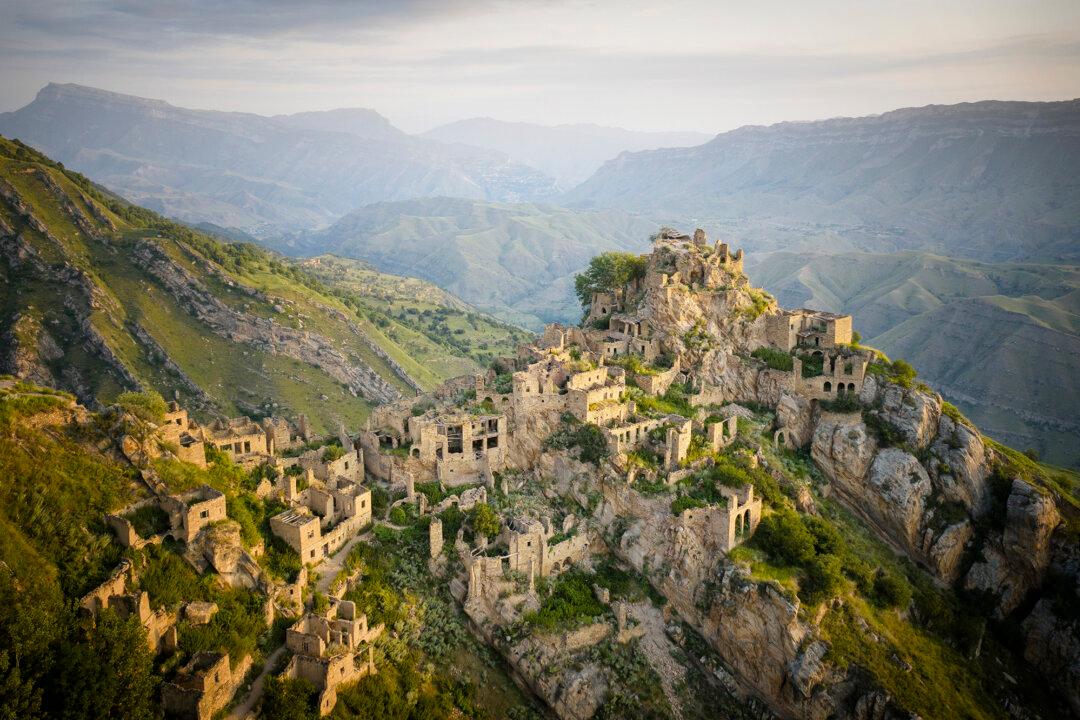In medieval times, the best home security system was to build your house high atop a steep mountain peak. The Khans who ruled what is presently Dagestan, Russia, undoubtedly knew this. As the conquesting Ottomans of the 16th century threw their weight around the region, the Khans probably saw sense in fortifying themselves and their families on the summits of the arid Caucasus Mountains.
Mimicking the ruins of Machu Picchu on the peaks of the Peruvian Andes, the ancient mountain fortress in Dagestan called Gamsutl lies between the Caspian and Black Seas. It dates back at least 1,600 years. It could be even 5,000 years old. While Machu Picchu was abandoned in the 16th century, Gamsutl thrived right into the 20th century.






